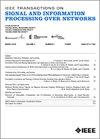复杂网络同步的规定时间异步非周期间歇动态事件触发控制
IF 3
3区 计算机科学
Q2 ENGINEERING, ELECTRICAL & ELECTRONIC
IEEE Transactions on Signal and Information Processing over Networks
Pub Date : 2025-08-18
DOI:10.1109/TSIPN.2025.3599777
引用次数: 0
摘要
本文研究了异步非周期间歇动态事件触发控制(aaid - tc)下复杂网络的规定时间同步(PTS)问题。将间歇控制(IC)方案与事件触发控制(E-TC)机制相结合,设计了一种新型异步控制器。通过在控制器中引入时变函数,可以将网络的收敛时间约束在任意规定的时间内。此外,在E-TC策略中引入了动态项和指数项来延长触发事件之间的间隔,数值仿真验证了其降低控制成本的效果。该方法采用平均控制速率而不是传统的最小控制速率,使网络的同步条件更容易满足。另外,采用Kirchhoff矩阵树定理建立了一个全局Lyapunov函数,从而放宽了对耦合矩阵的要求。在此基础上,推导了aaid - tc条件下CNs的同步判据,并通过耦合单连杆机械臂的数值仿真验证了该判据的准确性和有效性。本文章由计算机程序翻译,如有差异,请以英文原文为准。
Prescribed-Time Asynchronously Aperiodic Intermittent Dynamic Event-Triggered Control for Synchronization of Complex Networks
This paper addresses the prescribed-time synchronization (PTS) problem of complex networks (CNs) under asynchronously aperiodic intermittent dynamic event-triggered control (AAIDE-TC). A novel asynchronous controller is designed by integrating the intermittent control (IC) scheme with the event-triggered control (E-TC) mechanism. By introducing a time-varying function into the controller, the networks’ convergence time can be constrained within any prescribed time. Furthermore, in the E-TC strategy, dynamic and exponential terms are introduced to extend the intervals between triggering events and numerical simulation verifies its effects in reducing control cost. The IC approach adopts an average control rate rather than the conventional minimal control rate, making the synchronization conditions of the networks met more easily. Additionally, a global Lyapunov function is established by adopting Kirchhoff’s Matrix Tree Theorem, thereby relaxing the requirements for coupling matrix. Consequently, a synchronization criterion of the CNs under AAIDE-TC is derived, and its accuracy and validity are verified through a numerical simulation of coupled single-link manipulators.
求助全文
通过发布文献求助,成功后即可免费获取论文全文。
去求助
来源期刊

IEEE Transactions on Signal and Information Processing over Networks
Computer Science-Computer Networks and Communications
CiteScore
5.80
自引率
12.50%
发文量
56
期刊介绍:
The IEEE Transactions on Signal and Information Processing over Networks publishes high-quality papers that extend the classical notions of processing of signals defined over vector spaces (e.g. time and space) to processing of signals and information (data) defined over networks, potentially dynamically varying. In signal processing over networks, the topology of the network may define structural relationships in the data, or may constrain processing of the data. Topics include distributed algorithms for filtering, detection, estimation, adaptation and learning, model selection, data fusion, and diffusion or evolution of information over such networks, and applications of distributed signal processing.
 求助内容:
求助内容: 应助结果提醒方式:
应助结果提醒方式:


